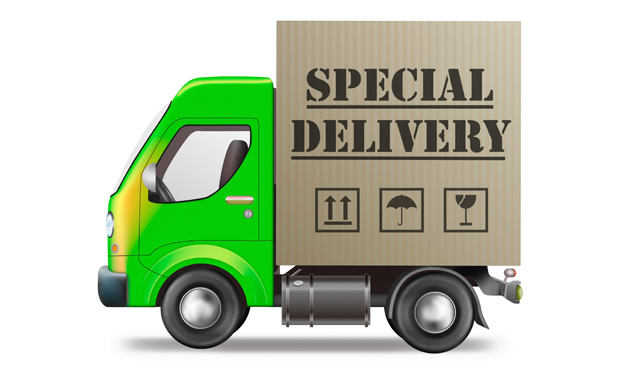Line fill rate can be used as a practical metric for measuring the order fulfilment performance of a single delivery or for all deliveries during a given time period. The term “line” refers to a line on the order, since a typical delivery or shipment manifest will display the name of each ordered product or item, along with the ordered quantity, in its own line.
As an example, if a customer orders ten different products, the order (and the delivery manifest) will have ten lines, each line displaying one of the ten products and the ordered quantity of that product.
Calculating Line Fill Rate
Using the same example, let’s look at how the line-fill rate KPI works:
Assuming the customer placed the 10-line-order for tomorrow and, to keep it simple, the order is for 10 items on each line. If the delivery is received by the customer tomorrow with 100 items, all of which match the product name or description on each line, the line fill rate is 100%.
If one line is missing one item though, the line fill rate for that order falls to 90%. If that same line is delivered with only two of the 10 items on the line, the line fill rate will still be 90%, as only one line on the delivery fails to match the order. On the other hand, if three lines on the delivery are each missing just one item, the line fill rate will now be just 70%.
Measuring Line Fill Rate for a DC or Transport Operation
The line fill rate KPI can be used to measure overall fulfilment performance for a logistics operation. In order to do this you need to be able to calculate the total number of order lines for the time period measured and the total number of those order lines which were perfectly filled.
Dividing the number of perfectly filled lines by the overall number of ordered lines, then multiplying the result by 100, will give you the percentage line fill rate.
Therefore, if your operation is delivering 1000 orders tomorrow, amounting to a total of 10,000 lines and you end up with 7,500 perfectly filled lines, your line fill rate for the day will be 75%. While this might not sound so terrible, if every delivery failed on at least one line, your order fill would be an appalling 0%, since order fill counts a delivery simply as a hit or a miss when matched against the purchase order.
On the other hand, if the 2,500 failed lines were all due to orders that didn’t ship, depending on how many orders were made up of those 2,500 lines, your order fill might look better than your line fill rate. Let’s imagine that 180 orders failed to get dispatched from your DC. Your order fill rate for the day would now be 88%, while your line fill rate would still be only 70%.
Measure Only to Improve
Now I’m not suggesting for a moment that failing to ship 180 orders on the scheduled day or that messing up 2,500 order lines is acceptable. The figures used here are purely examples. Whether you use order fill rate or line fill rate KPIs, or even both, you should be very concerned if your figures aren’t somewhere in the range of 95% or above. Even if they are at that level, KPIs are meant to be bettered, so the magic 100% is the level which you and your team should continuously seek to attain.




Hello,
I work for a trucking company and we currently do not use KPI’s. In my recent employment, we did. I was just wondering what key indicators would I use to get the best results. How would I access or find the information to be used to determine!
Thanks for the help in advance,
Hi, You will find a lot more information on our other blogs, particularly this one. https://www.logisticsbureau.com/blog/
But for a trucking company it’s all about utilisation of time and space.
So I would think about KPIs such as:
Capacity utlisation per trip
Time utilisation by truck by week.
Revenue per load, pallet, KG or whatever is appropriate.
Cost per km
Cost per hour
Those types of things. Improving those will improve profits.
I work for a beef company and my project involves order fill rate I’m trying to figure out how to improve
My company fulfills orders in 2 ways.
1. Ship to customer
2. Customer shops a store and completes a purchase in stock – can also be a quick pick.
What is the best practice on measuring fill rate for this business model? Include scenario 2 in the metric or measure just ship order fill rate?
Thanks
Check out this article. It should help: https://www.benchmarkingsuccess.com/the-perfect-order-kpi-is-it-the-best-metric-ever/
Hi Rob,
Thank you for sharing this artical,it do helps me understand more about the line fill rate and the item fill rate. However I‘m not quite sure about the difference between order fill rate and the line fill rate. Could you please help check if below logic is correct?
Say there are two same orders,each one in clude 3lines A B C,A product 1000items,B 2000 items,C 3000items. in ttl 6000 items.
if the perfect order rate for first order‘s A line is 900 out of 1000,for B is 1000out of 2000, for C is 3000 /3000. and the second order is perfect order. can I conclude to:
1. item fill rate = (900+1000+3000+6000)/12000=90.83%
2. line fill rate =(1+3)/6=66.67%
3. order fill rate =1/2=50%
Thanks and looking forward to your reply!
Looks logical to me…
But another way it is measured is simply hit or miss.
For example if 900 of 1,000 items on an order line are supplied that a miss.
If the order has 3 lines and only 2 lines are complete, that’s a miss.